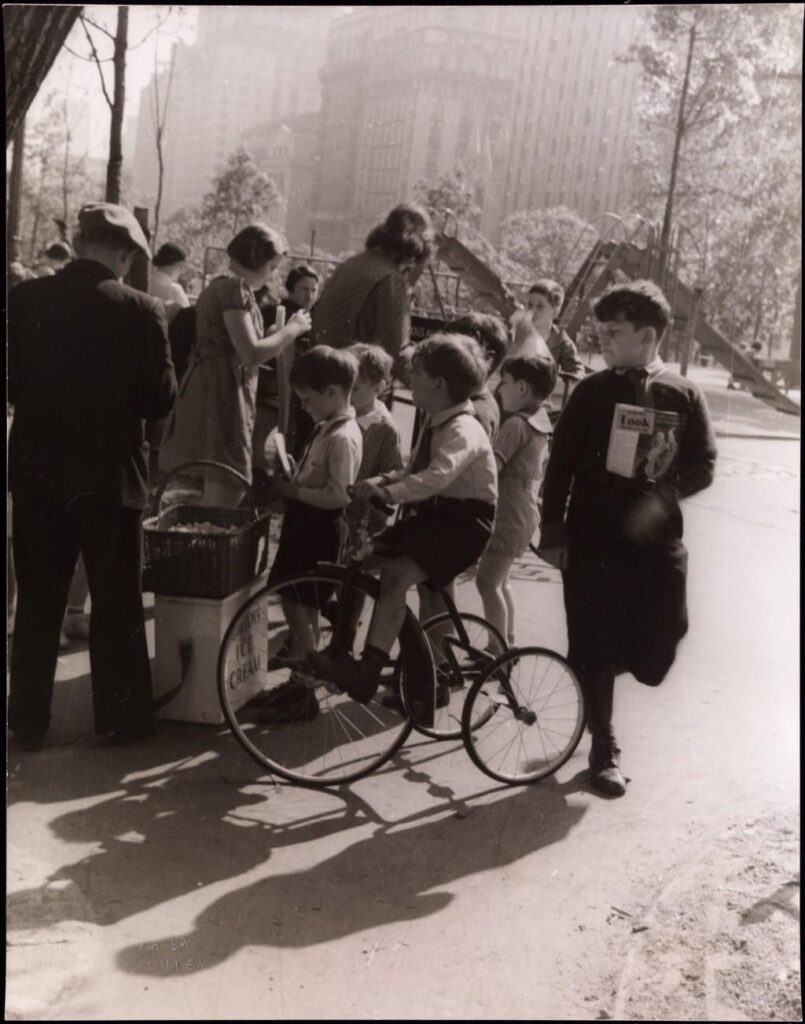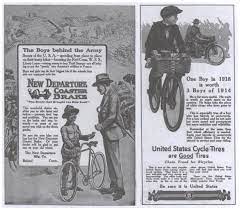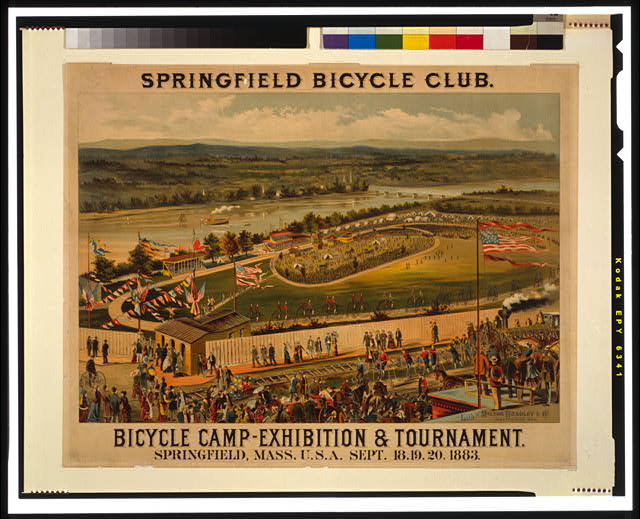Photographs and advertisements for bicycles through the years…

There are a number of interesting things to draw attention to in this image. The first is that there appear to be two children who have bicycles in this image, one in the foreground and one in the background. The most obvious one is dressed in a short-sleeved, collared shirt with a tie. He is flanked on his left and right by two boys who appear similar in age to him. Both are dressed similarly, the boy on the left looks to be buying himself ice cream, and the boy on the right looks to be carrying some kind of magazine. There is a second group of kids in this photo who appear noticeably younger. They are wearing short jumpsuit-type outfits and one looks to be wearing a strange cone-shaped hat, possibly for a birthday celebration. There is a lot of speculation being made, but to me, the “big kids” are clearly the kids on the bike and with the magazine. The boy buying ice cream looks so similar to the boy on the bike that I would not be surprised if they were brothers. Perhaps the boy on the bike is the older brother looking after the younger brother, or perhaps they are similar in age and the one at the ice cream stand has a bike stowed away out of the camera shot. But the bike in this image clearly separates the individual on it from his peers and likely gave him a position of envy to younger onlookers.

Even more motivating than the advertisement on the left is that on the right. This tells the viewer of this ad the importance of giving their children bicycles during that time of war. The larger text at the top of the ad reads, “one boy in 1918 is worth 3 boys of 1914” going on to explain the importance of young people “awheel” who were filling the caps in society while older boys were going off to fight in Europe. The middle stanza of the ad explains that not only will giving children bikes increase their “speed and promptness,” but also will increase their “ambition and reliability” clearly painting children on bicycles as far closer to their adult role models than kids on foot (Turpin, 2015; Gershon, 2017) Creating both a real, applicable distinction between the working potential of children on bikes as well as a psychological distinction for kids themselves, created a deep desire to obtain that ability and move on to the next phase of growth whatever that may be.

The Image above serves to show the practice of biking as more than an act for children. In recent years it’s become easy to see bikes as a toy meant for children, but this is far from the truth and the only reason children would have ever been exposed to bikes was due to their popularity amongst adults. The market for bikes among adults dwindled and so children were then targeted, but this was not a child’s toy, there was no widespread use of cars, and skateboards certainly were not around, so this was a true mode of transportation for adults, and freedom to a degree they had never experienced for children. If the image above is part of what kids saw their parents going out and doing, then getting their first bicycle and learning how to use it and get around wherever they call home, had to have been a massive stepping stone towards adulthood for them.